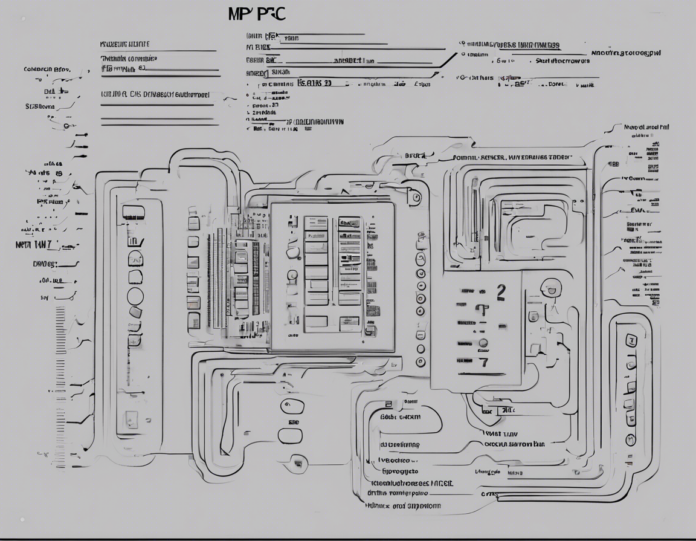A Comprehensive Guide to Understanding MPC in the Digital Age
In the world of music production and beat-making, the term MPC often gets thrown around. Standing for MIDI Production Center or Music Production Controller, an MPC is a powerful tool that has revolutionized the way music is created. Originally created by the iconic company Akai Professional, the MPC has become a staple in the music industry, used by legendary producers and modern artists alike. In this article, we dive deep into the world of MPCs, exploring their history, features, benefits, and why they continue to be a crucial tool for musicians around the globe.
The Origins of MPC
The MPC has a rich history that dates back to the late 1980s. Akai Professional, a Japanese electronic musical instrument company, first introduced the MPC60 in 1988. This innovative piece of equipment combined sampling, sequencing, and tactile drum pad control in a single, intuitive unit. The MPC60 quickly became a game-changer in the music industry, providing producers with a hands-on approach to creating beats and music.
Evolution of MPCs
Over the years, Akai Professional has continued to innovate and release new models of the MPC, each one more advanced than the last. From the MPC2000 to the MPC Live, these devices have evolved to incorporate touch screens, internal storage, audio interfaces, and a plethora of features that streamline the music production process. Today, MPCs come in various shapes and sizes, catering to different needs and preferences of producers.
Key Features of MPCs
1. Sampling Capabilities
One of the standout features of an MPC is its sampling capabilities. Producers can record sounds from various sources, chop them up, assign them to pads, and create intricate beats and melodies. The sampling engine on an MPC allows for precise editing, time-stretching, and manipulation of audio samples.
2. Sequencing
MPCs are equipped with powerful sequencers that enable producers to arrange their sounds and create entire songs. The intuitive interface allows for easy navigation and programming of patterns, loops, and arrangements.
3. Tactile Drum Pads
The iconic drum pads on an MPC provide a tactile and responsive surface for triggering sounds. These pads are velocity-sensitive, allowing producers to add dynamics and expression to their performances.
4. MIDI Integration
MPCs seamlessly integrate with other MIDI devices, such as keyboards, synthesizers, and drum machines. This allows for expanded creative possibilities and the incorporation of external gear into the production setup.
5. Effects and Processing
MPCs come equipped with a variety of built-in effects and processing tools, such as EQ, compression, reverb, and delay. These tools enable producers to sculpt and shape their sounds directly within the MPC environment.
Benefits of Using an MPC
1. Workflow Efficiency
The all-in-one nature of an MPC streamlines the music production process, allowing producers to sample, sequence, and mix within a single device. This efficiency boosts creativity and helps bring ideas to life quickly.
2. Portability
Many modern MPCs are designed to be portable, making them ideal for producers on the go. Whether in the studio, on stage, or while traveling, the compact size and versatility of an MPC make it a convenient tool for creating music anywhere.
3. Hands-On Control
The tactile drum pads and intuitive interface of an MPC provide a hands-on approach to music production. Producers can tap out beats, play melodies, and manipulate sounds in real-time, adding a human touch to their music.
4. Integration with DAWs
Most MPCs can be seamlessly integrated with digital audio workstations (DAWs), allowing for a hybrid workflow. Producers can use the MPC as a standalone instrument or as a controller for their favorite software, combining the best of both worlds.
5. Creative Inspiration
The tactile nature of an MPC, coupled with its sampling and sequencing capabilities, can inspire creativity and experimentation. Producers often find new sounds, rhythms, and melodies by exploring the endless possibilities within an MPC.
FAQs about MPCs
1. Are MPCs only used for hip-hop music production?
While MPCs have a strong association with hip-hop music, they are versatile tools that can be used across various genres, including electronic, pop, R&B, and more.
2. Do I need to be a skilled musician to use an MPC effectively?
No, MPCs are designed to be user-friendly and intuitive, making them accessible to creators of all skill levels. With practice and experimentation, anyone can learn to harness the power of an MPC.
3. Can I connect an MPC to other studio equipment?
Yes, MPCs offer a range of connectivity options, including MIDI, USB, and audio inputs/outputs, allowing you to integrate them seamlessly with other studio gear.
4. Are there different models of MPCs available?
Yes, Akai Professional offers a range of MPC models, each catering to different needs and preferences of producers. From standalone units to hybrid controllers, there is an MPC for every workflow.
5. Can I use an MPC for live performances?
Absolutely! Many artists use MPCs in their live setups to trigger samples, play beats, and add a dynamic element to their performances. The portability and versatility of MPCs make them ideal for live use.
In conclusion, MPCs have played a significant role in shaping the landscape of music production, offering a blend of tradition and innovation that continues to inspire creators worldwide. Whether you’re a seasoned producer or a beginner looking to dive into music-making, an MPC can be a powerful ally in your creative journey. With its sampling capabilities, sequencing prowess, and tactile interface, an MPC opens up a world of possibilities for crafting unique and expressive music.

